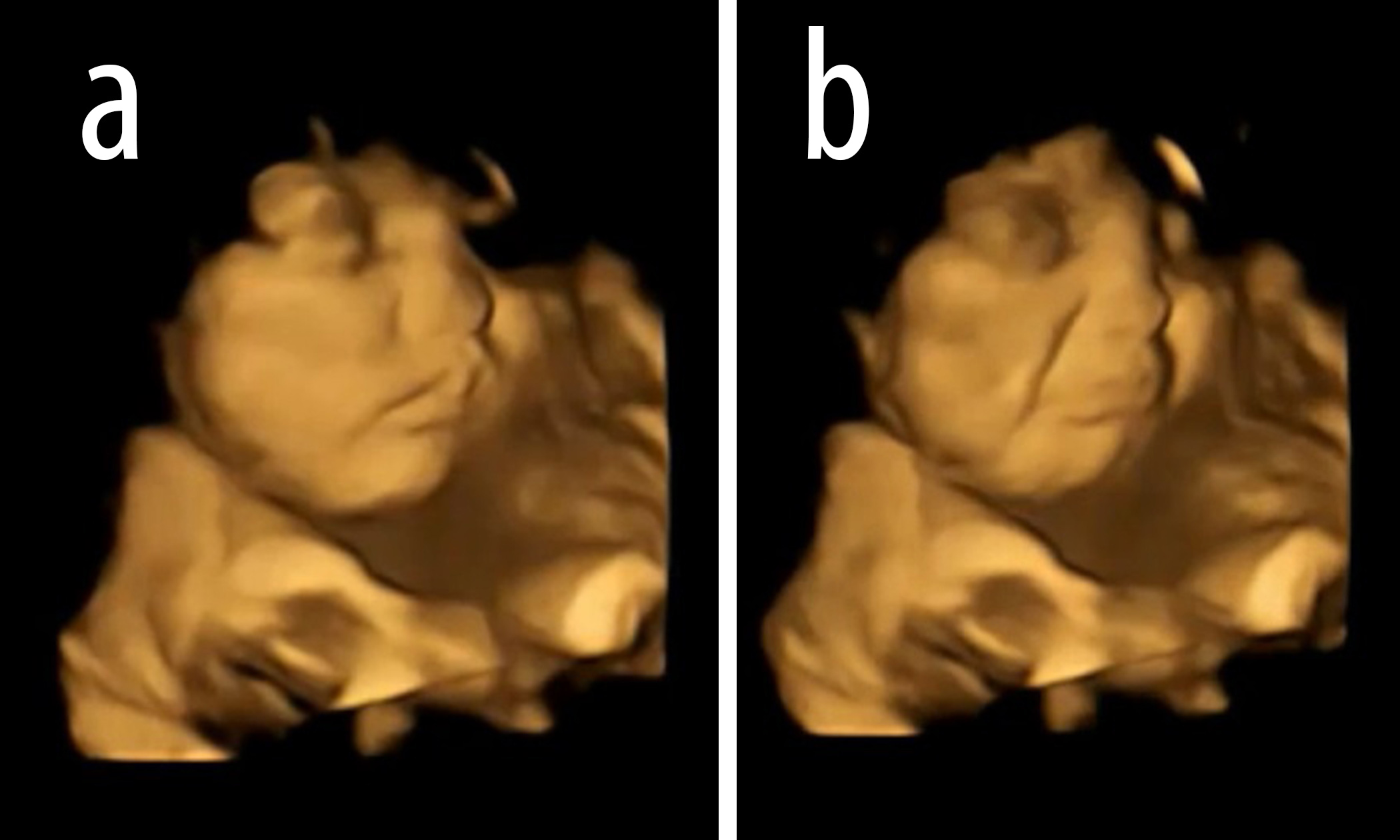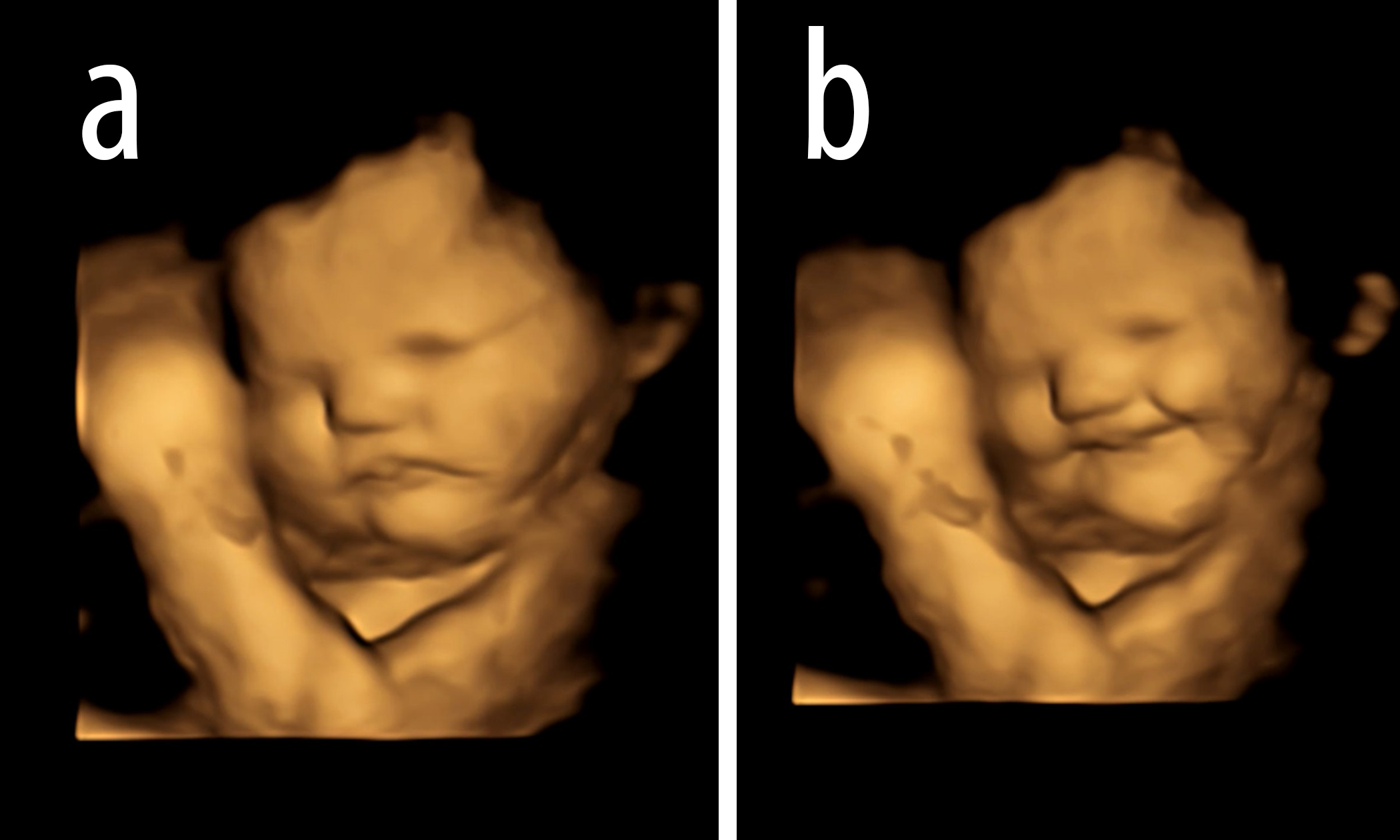I became your enemy because I tell you the truth
To some parents, it surely comes as no surprise: Babies in the womb can express delight and displeasure on their faces in correlation to the flavors their moms consume, a UK study found.
Using coded 4-D ultrasound scans, researchers identified complex facial movements in babies who were subjected to carrot (a sweet vegetable) and kale (a bitter vegetable) and confirmed their hypothesis to be correct: fetuses subjected to carrots showed more smiles; those subjected to kale showed more cry faces. Fetal facial movements were measured frame by frame, revealing reactions to maternal ingestion.
Researchers from the Department of Psychology at Durham University, alongside scientists from Université de Bourgogne and Aston University, tested pregnant women and their fetuses at 32 to 36 weeks’ gestation from northeast England. They were given single-dose capsules of either carrot, kale, or no flavor.
According to the study, amniotic fluid is the first place where fetuses start to sense their chemical environment. The prenatal environment is permeated with aroma compounds conveyed through the mother’s diet, which provides continuous sensory information pertaining to taste and smell.


Taste buds develop anatomically as early as 8 weeks’ gestation, they further stated, and can detect tastants from 14 weeks.
Complex facial movements contribute to what are called “gestalts,” which resemble expressions associated with a number of positive or negative hedonic responses. Facial movements are classified according to a coding scheme involving a collection of muscular movements. The furrowing of a brow and lowering of the lip toward the chin are associated with a negative crying gestalt, for example.
Researchers found that fetuses exposed to carrot flavor showed “lip-corner puller” and “laughter-face gestalt” more frequently than those exposed to kale flavor, who showed more “lower-lip depressor” and “cry-face gestalt.” Complex carrot flavor has been described by adult judges as “sweet” because of its sugar content, but also sometimes as having a fruity or woody flavor. Kale was chosen because it conveys more bitterness than other green vegetables, such as spinach, broccoli, or asparagus.
Moreover, the experiment confirmed another hypothesis: that the complexity of facial gestalts increases as gestation increases from 32 to 36 weeks, particularly in the kale condition, though not in the carrot condition.
These findings have important implications for understanding the earliest evidence of fetal ability to sense and discriminate different flavors. It has been shown in previous testing of term-born neonates, in the hours or days following birth, that babies showed less aversive reactions to foods such as garlic or carrot juice if already exposed to such flavors in the womb. Likewise, babies up to 4 days of age whose mothers had consumed anise-flavored sweets in the last two weeks of pregnancy liked the anise aroma more than those whose moms did not consume the sweets.
Share your stories with us at emg.inspired@epochtimes.com, and continue to get your daily dose of inspiration by signing up for the Inspired newsletter at TheEpochTimes.com/newsletter
https://www.theepochtimes.com/babies-in-the-womb-smile-when-their-moms-eat-carrot-but-cry-over-kale-flavor-uk-study-finds_4759985.html?utm_source=newsnoe&src_src=newsnoe&utm_campaign=breaking-2022-10-03-one&src_cmp=breaking-2022-10-03-one&utm_medium=email&est=9n%2BcurIZtR41pot9BR6XuTToGzTd0TT%2B8ZCiDHEMTFrZiLt%2BUDAj0%2FzB%2Fjks78H4rr1m
Michael Loyman
